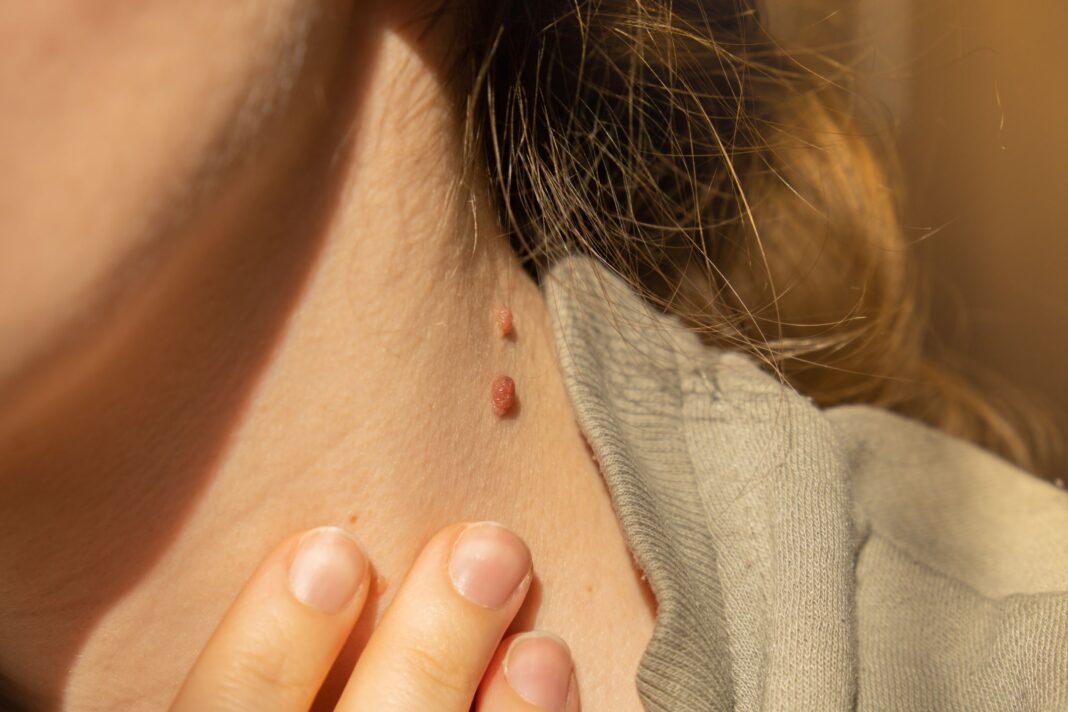Skin tags, those tiny tabs of tissue that seem to sprout in the most inconvenient places, are more than just a nuisance—they’re a universal experience. These benign growths, known to the medical world as acrochordons, find their way onto the skin of up to 60% of adults. If you’ve ever found yourself considering a DIY removal, pause and consider the safe alternatives.
Understanding the Basics: What Are Skin Tags?
Imagine a tiny balloon on a thin string, popping up anywhere on your skin—this is your typical skin tag. They’re common in places where skin rubs against skin, like the neck or underarms. While they’re medically harmless, they can be cosmetically or physically bothersome.
The Why Behind Skin Tags
While they can appear at any age, you’re more likely to notice them as you enter your 40s. But why now? Factors like genetics, chafing, and certain health conditions like high blood pressure or diabetes can increase their presence. While we can’t halt time, addressing underlying health issues and minimizing skin friction can help keep these pesky tags at bay.
The Lure of At-Home Removal
The internet abounds with skin tag hacks but proceed with caution. Over-the-counter creams and freezing kits promise much but deliver little. Some suggest ligation, a method of cutting off the tag’s blood supply with dental floss or string. However, this can lead to bleeding, scarring, or even infection. As appealing as home remedies like apple cider vinegar or tea tree oil may seem, they can also irritate or burn sensitive skin.
Professional Removal: The Gold Standard
When it comes to removing skin tags, the safest bet is always to see a professional. Dermatologists can snip off small tags quickly and with minimal discomfort, often without the need for numbing creams. Larger tags may require local anesthesia and specialized techniques like electrocautery or cryotherapy to minimize bleeding and ensure a clean removal.
For those with deeper skin tones or sensitive areas, such as eyelids, an expert’s touch is crucial to avoid complications like hyperpigmentation or scarring. Aftercare is simple: keep the area clean, and if needed, covered to prevent irritation.
Insurance and Skin Tags: What’s Covered?
In many cases, skin tag removal is deemed cosmetic and not covered by insurance. However, if they’re causing discomfort or interfering with daily activities, your provider may consider the procedure medically necessary. Costs can start at $200 without insurance, but it’s worth discussing with your dermatologist.
The Bottom Line on Skin Tags
Skin tags may be harmless, but they’re not necessarily a permanent part of your landscape. Professional removal is quick, safe, and effective, giving you the freedom to wear your skin with confidence. So before you reach for the tweezers or tie a string around that bothersome tag, remember: when it comes to your skin’s health, it’s always best to play it safe and let the experts take the lead.








